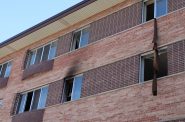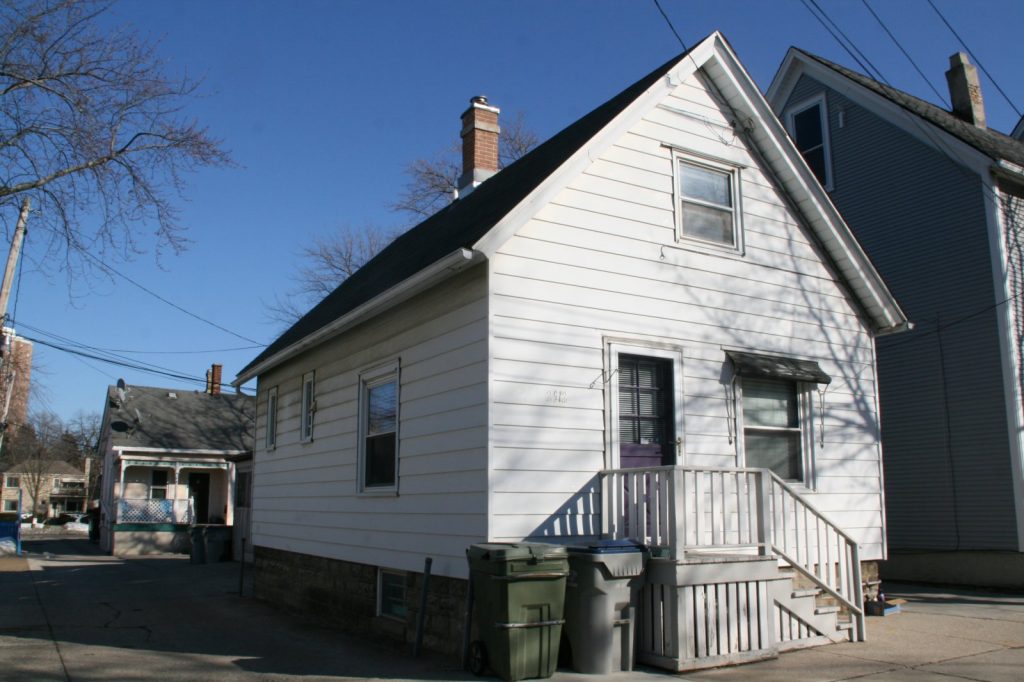Plan Commission Backs Carriage Homes, Spikes ‘Missing Middle’ Housing
Proposals differ from mayor's Growing MKE plan and divide commission members.
Are they straightforward ideas to respond to a housing shortage or trojan horses to gentrify neighborhoods in Milwaukee?
If you watched Monday’s City Plan Commission hearing, you got an earful of opinions about that.
Common Council President José G. Pérez and Alderman Robert Bauman are proposing to create a new zoning designation to allow “missing middle” buildings of up to eight units to be developed with Common Council approval and to establish a legal pathway to build new accessory dwelling units, commonly called carriage units or granny flats.
Both proposals borrow from the Department of City Development‘s Growing MKE effort, while ignoring much of the larger housing growth plan. The two prominent council members have expressed skepticism about the overall effort, but have backed certain components.
Their proposals are intended to use the city’s zoning code to expand the number of housing types available; one of many issues believed to be contributing to a nationwide housing crunch. But Pérez and Bauman now find themselves running into the same opposition from community groups that DCD has encountered: opponents appear to want housing proposals to solve every issue at once.
After seeming to be spun in circles by wide-ranging public testimony in opposition, the City Plan Commission voted Monday to recommend rejecting the eight-unit zoning designation. But only after two members first started to make motions to approve, then stopped.
“I think there is a lot more work to be done that we are not going to be solving in the moment,” said Commissioner Ranell Washington in making the motion to deny.
Opponents, including Melody McCurtis of Metcalfe Park Community Bridges and Fatima Laster of Five Points Neighborhood Association, raised concerns about the perceived lack of community engagement around zoning changes before the city and the need for free parking at public hearings, demanded affordability mandates and expressed contempt for out-of-state investors.
“When you support these ideas, you just guarantee more racial income equality,” said Nicole Robinson, a research consultant with Leverage Philanthropic Partners.
But on the accessory dwelling units (ADUs), as the meeting went into its third hour, the opponents weren’t as vocal. The plan commission voted to recommend approval, with only Washington in opposition by abstention.
Both votes are recommendations to the Common Council, which has the authority to make a final decision.
Missing Middle Housing
The “missing middle” option, formally a new zoning designation called RT5, would provide a way for between five to eight units of housing to be built on a lot without the need to create a per-project zoning designation or navigate variances with the Board of Zoning Appeals.
“Missing middle” is a planning term used to refer to styles of medium-density housing that zoning codes made more complicated to build and, over decades, have become undersupplied. It is not, as at least one opponent and commissioner implied, a reference to middle-class or middle-income housing. Growing MKE calls for multiple ways to increase the supply of the housing type, which can include townhomes, live-work units and bungalow courts.
But unlike Growing MKE, it doesn’t call for any immediate changes. It would not immediately apply to any parcels and changing any property to the new RT5 zoning designation would require council approval, preserving council power. Bauman immediately said he didn’t think it was appropriate near the historic districts on the west side of his district, which includes the Concordia neighborhood, but could be appropriate near Downtown on the east side of his district.
Pérez told the City Plan Commission Monday that the RT5 designation would create a pathway for emerging developers, often people of color, to enter the real estate world without having access to large amounts of capital. “This could lead to larger projects for these emerging developers down the road,” said the council president. The city’s most common zoning designation is currently RT4, which allows one to four units.
“Creating the RT5 zoning district will not apply it to any properties in the city… nor will it allow any types of housing to be developed anywhere in the city,” said DCD planning manager Sam Leichtling in clarifying the immediate impacts of the proposal. DCD supports the change.
Bauman and Pérez said concerns raised by the city about how the city handles public hearings, supports affordable housing and conducts city business would be worth reviewing, but with other legislation.
Willie Smith voted against Washington’s motion to deny. He had previously spoken about approving the proposal, as did Commissioner Jesus Gonzalez.
Accessory Dwelling Units
The vision for ADUs is to relegalize something that can be found in all of the city’s oldest neighborhoods.
Pérez said the proposal would enable the establishment of multi-generational housing, something previously much more common, and provide more housing options that could provide passive income to homeowners. He noted that Madison and Wauwatosa have already legalized ADUs. Several large cities across the country are also re-legalizing ADUs, with cities like Minneapolis seeing applications to build more than 200 units.
Leichtling said DCD staff have done “significant national best practices research” and believe the council members’ proposal conforms with best practices.
The proposal would allow one ADU to be constructed on a property that is owner occupied at the time of construction. The unit could be built as a free-standing structure, like many historic units are along alleys. It could also be built above a garage or as an addition to an existing structure. The full building code would apply to any accessory unit.
Bauman said he does not believe the owner occupancy restriction is tough enough, but said requiring one of the units to be permanently owner occupied by deed restriction runs afoul of state law and, more significantly, would dissuade a bank from lending money to enable its construction because it couldn’t foreclose in a default.
It would eliminate the need to seek special Board of Zoning Appeals approval, as is currently required, because the city has no formal definition of an ADU in the zoning code.
“I would be for it, but I know it won’t benefit the Black community,” said Robinson. Advocates across the country, including AARP, have promoted ADUs as a way to create lower-cost housing, often because it is smaller, in higher-cost areas.
McCurtis raised concerns that ADUs would cause assessments to rise on properties with them, which Bauman responded was often seen as a good thing after making a six-figure investment. “I am asking you to all look at what is being done in special cases,” she said of trying to come up with special tax treatments, including a cap or 10-year abatement. The state’s uniformity clause prevents special treatment for properties. “None of that is done in the city of Milwaukee,” said Bauman.
She also raised concerns about how a $25,000 subsidy would be applied in Milwaukee, as Pérez referenced Wauwatosa’s program, which provides the subsidy to the first four homeowners to build an ADU in 2025. But Pérez said he isn’t proposing such a program in Milwaukee and doesn’t know where the money would come from even if he was. “There is money available,” said Shear Winston, another opponent, who said he wouldn’t tell anyone where because then everyone would come after it.
Washington proposed adding conditions to investigate financial incentives to an ADU approval vote, then backed off when Pérez asked how that was germane to the specific proposal.
The two proposals will next be reviewed by the Zoning, Neighborhoods & Development Committee, where public hearings will again be held. Opponents have organized a “Gentrification is Here” virtual meeting for April 15.
UPDATE: The specifics of what is included in the current Growing MKE plan have been updated.
Legislation Link - Urban Milwaukee members see direct links to legislation mentioned in this article. Join today
If you think stories like this are important, become a member of Urban Milwaukee and help support real, independent journalism. Plus you get some cool added benefits.
More about the Growing MKE proposal
- Milwaukee Seeks ‘Missing Middle’ Housing Developers - Jeramey Jannene - Nov 24th, 2025
- Milwaukee Aims To Build ‘Missing Middle’ Housing in 2026 - Jeramey Jannene - Oct 29th, 2025
- Despite Its Passage, ‘Growing MKE’ Still Not A Done Deal - Jeramey Jannene - Sep 16th, 2025
- Mayor Signs Housing Legislation, Praises Late Jonathan Brostoff - Jeramey Jannene - Jul 16th, 2025
- Council Adopts Growing MKE Plan - Jeramey Jannene - Jul 15th, 2025
- After Lengthy Debate, Council Legalizes Carriage Homes - Jeramey Jannene - Jul 15th, 2025
- Housing Plan Wins Key Council Committee Endorsement - Jeramey Jannene - Jul 9th, 2025
- City Hall: Committee Waters Down Proposed ‘Granny Flat’ Plan - Jeramey Jannene - Jun 17th, 2025
- Madison Pursuing Its Own Zoning Reform Similar To ‘Growing MKE’ - Sarah Lehr - Jun 12th, 2025
- ‘Growing MKE’ Proposal Picks Up Key Endorsement - Jeramey Jannene - Jun 2nd, 2025
Read more about Growing MKE proposal here
City Hall
-
Council Blocked In Fight To Oversee Top City Officials
 Dec 16th, 2025 by Jeramey Jannene
Dec 16th, 2025 by Jeramey Jannene
-
Latest Effort to Adopt New Milwaukee Flag Going Nowhere
 Dec 3rd, 2025 by Jeramey Jannene
Dec 3rd, 2025 by Jeramey Jannene
-
After Deadly May Fire, Milwaukee Adds New Safety Requirements
 Dec 2nd, 2025 by Jeramey Jannene
Dec 2nd, 2025 by Jeramey Jannene






















Effectively, they scrapped the growing mke plan. I thought this would have been the easiest zoning change to pass but the fact we couldn’t get this through doesn’t speak well to the cities future. I hate it here.